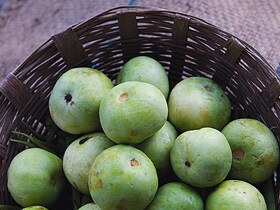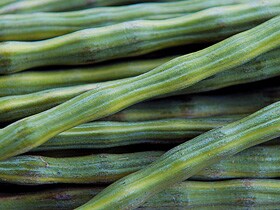
The Drumstick: The Lost Tradition of Seasonal Food
The practice of serving seasonal vegetables needs to be saved
Nostalgia is the tastiest sauce, yada yada, but I can’t begin this piece without thinking of my fondest memory of winter. It is a vegetable stew, possibly a bastard born of some deemed-English parent, made with beetroot, carrots, onions, peas and potatoes and spiced with whole peppercorns, deep red in colour and almost watery in consistency. Its arrival on the dinner table heralded the season of mists and mellow sunshine, of apples and oranges, of school holidays and strings of lights on Park Street.
Everyone in India has these season-specific food associations, whether it’s the sarson da saag in Punjab’s fierce winters, or undhiyu, the mixed vegetable dish in Gujarat, where two extreme seasons are often crammed into the space of a day. They are one of the ways this country acknowledges the earth’s slow, majestic perambulation around the sun, the dependability of which phenomenon somehow has never managed to rob it of wonder.
Soon, though, in urban India, that sentence will be written with the verb in the past tense. While there’s no doubt the rural core will continue to measure their year by the sun, our cities are well on their way to blurring the seasons where the dining table is concerned. “In an ideal world,” said a chef friend, “we’d be eating cauliflowers only in winter, with the rest of the so-called English vegetables. Fortunately or otherwise, we don’t live in an ideal world.”
It’s not just the cauliflower. In Bangalore, where the year-round temperate weather helps it steal a lead over other Indian cities in obviating the seasons, Namdhari’s Fresh, the premier vegetable retailer, pulls out only two of its main products — the relatively less-sought-after snowpeas and sugarsnaps — for five to six months of the year. Everything else, from the humble bhindi to the exalted leek, is available every single day, at least in theory.

The reason isn’t too far to seek: Intelligent farming, studied use of varied agro-climatic zones — Namdhari’s, for instance, grows its summer cauliflowers in the high altitudes of Ooty (2,400 m), saving its fields around Bangalore (920 m) for what it calls ethnic vegetables — shade farming for delicate greens, sprinkler irrigation for moisture maintenance, intercropping, et al.
Alongside improved agricultural practices, private suppliers have also managed to substantially ramp up the cold chain network, ensuring their produce reaches retail markets in far-flung cities as well as finicky institutional buyers (read restaurants). So, Gujarat, which grows onions both in the kharif (monsoon) and the rabi (winter) seasons, can supply the vegetable to Punjab — the state grows onions only as a rabi crop though it’s always in high demand — no matter where you are in the calendar year.
(That is not to imply, of course, that the food supply chain works as smoothly as Flipkart’s order service. Those newspaper photos of surplus onions dumped by the roadside and grains rotting in godowns are a blight on any civilised nation. Much of it has to do with human error, the very
variable that Flipkart has successfully minimised.)
One of the fallouts of the accelerated efficiency, ironically, has been the active circumscription of our food choices. Consider the time-challenged urbanite on the weekly grocery run: Will he pause to consider the lowly tinda, almost certain to attract turned-up noses and pushed-away plates at the family dinner table, or will he go for the safe option of the pretty cauliflower, even in May? Sure, the quality will vary, as will the prices — in inverse proportion — but that’s often a minor concern. Likewise, if there’s no formidable grandma standing over the kids to ensure they have the lauki, is there a place for the mild-tasting, water-rich, cooling vegetable at lunch on a hot summer day? And so, welcome to the merry-go-round of potatoes and tomatoes, beans and peas, brinjal and spinach, and, if we’re really experimental with our taste buds, pumpkin and padwal.
One factor that’s contributed significantly to the homogenisation of the Indian dinner table over the past couple of decades is the greater mobility of the middle-classes. I’m willing to bet that the Andhraite who lives in Guntur has a far more varied diet than one who has been transplated to Delhi, likewise for the Gujarati in Rajkot and the Bengali in Asansol. Staying close to a cuisine’s place of origin is the surest way of ensuring its perpetuity.
The flipside contains the very real danger of losing much of our distinctive culinary legacies. My grandmum — an even more inextricable part of my food memories than the winter stew which, of course, was one of her specialties — often referred to the proverbial 32 varieties of leafy greens available in Bengal. I dare say the Kashmiri haaq, which I discovered one Delhi winter, wasn’t part of her repertoire but, of her 32, I think I’d know my way around a maximum of four or five. The loss, over two generations, is incalculable.
So is there no hope, short of going back to our roots and our obscure home-towns?

I don’t think so. The key, I believe, lies with our food leaders: The influential chefs, the respected food-writers (not to be confused with restaurant-reviewers), the innovative farmers. Think Jamie Oliver and his 2005 campaign, Feed Me Better, which replaced junk in UK school dinner menus with healthy food, or even California cuisine founder Alice Waters’ much-reviled efforts to make America eat better. Our TV chefs, especially, would do well to leverage their vast reach to reinvent desi foods for the average Indian consumer: Sex up the salgam!
Desi foods need a saviour, or many, for resuscitation and rescue. Individuals, I know, are doing their bit: The chef friend I mentioned, for instance, has found a new bestseller in his Wild Greens Lasagna, a concoction that uses baby spinach, cholai, laal saag (both varieties of the amaranth) and tender drumstick leaves, among other greens. “As long as they don’t know what’s gone into it, guests keep asking for more,” he grins. Grandma would approve.
(This story appears in the 26 August, 2011 issue of Forbes India. To visit our Archives, click here.)















